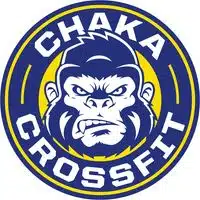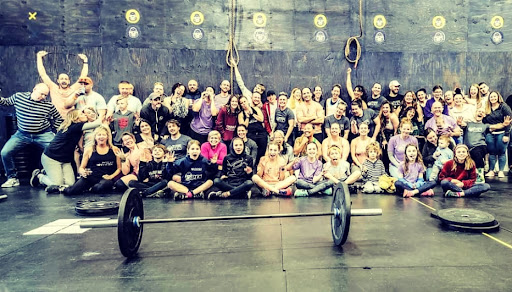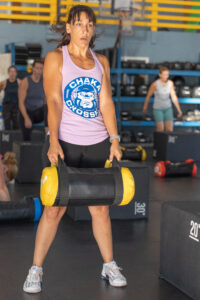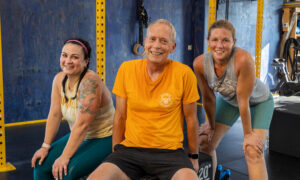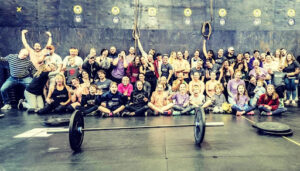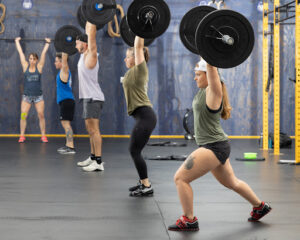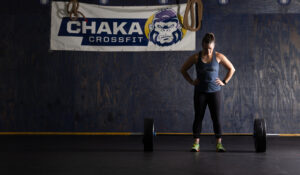Many athletes are drawn to the intense physical challenge and community-driven atmosphere of CrossFit, but mastering the high-intensity training demands of this popular fitness regimen can be daunting. To excel in CrossFit, you need to strike a balance between pushing yourself to the limit and preventing burnout or injury. In this guide, we will provide you with valuable tips and strategies to help you navigate the demanding world of CrossFit training effectively.
Key Takeaways:
- Varying Intensity Levels: Incorporate different intensity levels in your training to build stamina and endurance.
- Proper Recovery: Ensure adequate rest, hydration, and nutrition to allow your body to recover and prevent burnout.
- Consistent Training: Stay committed to a consistent training schedule to see progress and improvements in your performance.
Preparing Your Body and Mind for CrossFit
The Importance of a Solid Foundation
With high-intensity training demands of CrossFit, it is crucial to establish a solid foundation in both physical fitness and mental resilience. Before plunging into the intense workouts, focus on building strength, flexibility, and endurance through a well-rounded fitness routine. Incorporate exercises that target all muscle groups, including core stability and mobility work, to prevent injuries and improve overall performance. Adequate rest and recovery are equally important to allow your body to adapt and grow stronger.
Mental Toughness and the Psychology Behind High-Intensity Workouts
With CrossFit, mental toughness is just as important as physical strength. High-intensity workouts can push you to your limits both physically and mentally. It is vital to develop a strong mindset to overcome challenges and push through the toughest moments of a workout. Practice positive self-talk, visualization techniques, and goal-setting to stay focused and motivated during intense training sessions. Embrace discomfort and learn to push past your perceived limits to unlock your full potential.
Mental toughness is a key factor in determining your success in CrossFit. By mastering the psychology behind high-intensity workouts, you can improve your performance, build resilience, and achieve your fitness goals. Be mindful of, your mind can be your biggest asset or your greatest limitation in the world of CrossFit.
Essential Equipment and Gear for CrossFit Training
Selecting the Right Footwear
Not all shoes are created equal when it comes to CrossFit training. One of the most important pieces of equipment you’ll need is the right footwear. CrossFit involves a variety of movements from weightlifting to running to jumping, so it’s imperative to choose shoes that offer stability, support, and durability.
Choosing Proper Workout Apparel and Accessories
CrossFit demands the right apparel and accessories to ensure you can perform at your best while staying comfortable and safe. For instance, choosing the right workout clothes can make a huge difference in your performance. Look for moisture-wicking fabrics that will keep you dry and comfortable throughout your intense workouts. Additionally, ensuring you have proper supportive gear like knee sleeves, wrist wraps, and grips can help prevent injuries and improve your overall performance.
Understanding and Incorporating the Key Movements of CrossFit
Bodyweight Exercises: From Push-ups to Pull-ups
From push-ups to pull-ups, bodyweight exercises are foundational movements in CrossFit. These exercises not only build strength but also improve endurance and flexibility. Push-ups target the chest, shoulders, and triceps, while pull-ups engage the back, biceps, and core. Mastering these movements is necessary for any CrossFit athlete looking to excel in their training.
Weightlifting Techniques for Power and Efficiency
Movements in CrossFit incorporate various weightlifting techniques to enhance power and efficiency. Understanding proper form and technique is crucial in preventing injury and optimizing performance. Whether it’s the clean and jerk or the snatch, honing in on these weightlifting movements can take your CrossFit training to the next level.
Weightlifting is not just about lifting heavy weights; it’s about mastering the technique to generate power efficiently. It’s important to focus on form, speed, and coordination to execute these movements effectively. By incorporating weightlifting techniques into your training regimen, you can improve strength, power, and overall athletic performance.
Mastering High-Intensity Cardiovascular Routines
Incorporating high-intensity cardiovascular routines is a key component of CrossFit training. From sprints and rowing to box jumps and kettlebell swings, these routines push your cardiovascular system to the limit. By mastering these intense workouts, you can improve your endurance, stamina, and overall cardiovascular health.
With a focus on interval training and varied movements, high-intensity cardiovascular routines in CrossFit challenge athletes both mentally and physically. These workouts are designed to push you out of your comfort zone and maximize your cardiovascular capacity. By incorporating these routines into your training schedule, you can enhance your fitness levels and conquer the demanding challenges of CrossFit.
Creating a Balanced and Progressive Training Plan
Structuring Your Workout Schedule
Keep in mind that an effective CrossFit training plan requires a balance of different elements such as strength training, conditioning, skill work, and mobility. Structuring your workout schedule in a way that allows for adequate rest and recovery is key to preventing burnout and injury. It’s important to alternate between high-intensity days and active recovery days to give your body the time it needs to repair and grow stronger.
With proper planning, you can schedule specific days for working on different skills or movements, such as Olympic lifting, gymnastics, or endurance training. This approach helps to ensure that you are addressing all areas of fitness and making consistent progress.
Periodization Strategies to Avoid Plateaus
Periodization is a key strategy to incorporate into your CrossFit training plan to avoid hitting plateaus and keep making progress. By dividing your training into distinct cycles that focus on different goals or phases, you can systematically build strength, endurance, and skills while allowing for recovery periods to prevent overtraining.
The
Periodization involves changing the intensity, volume, and frequency of your workouts at specific intervals to challenge your body in new ways and promote continuous improvement. By varying your training and introducing new stimuli, you can keep your body adapting and improving without getting stuck in a rut.
Nutrition and Hydration Strategies for High-Intensity Training
Fueling Your Body for Optimal Performance
Training at high intensity levels in CrossFit requires a well-thought-out approach to nutrition. Your body needs the right combination of macronutrients – carbohydrates, proteins, and fats – to fuel your workouts and aid in recovery. Carbohydrates are crucial for providing the energy necessary for intense training sessions, while protein helps repair and build muscle tissue. Healthy fats play a role in hormone production and overall health.
Hydration Before, During, and After Workouts
Strategies for proper hydration during high-intensity training are paramount for performance and overall well-being. Hydrating before a workout helps prepare your body for the demands of exercise, while hydration throughout keeps you performing at your best. Replenishing fluids lost through sweat post-workout is equally important to aid in recovery and prevent dehydration.
Importance
Proper hydration is crucial for maintaining optimal performance during high-intensity training sessions. Dehydration can lead to decreased energy levels, impaired cognitive function, muscle cramps, and even more serious issues such as heat stroke. By staying properly hydrated before, during, and after workouts, you can ensure that your body is able to perform at its peak and recover effectively.
Tracking Your Progress and Adjusting Your Training Regimen
Once again, mastering the high-intensity training demands of CrossFit requires a keen focus on tracking your progress and adjusting your training regimen accordingly. To stay on top of your game and continue making strides in your fitness journey, it is crucial to have a clear understanding of how your body is responding to the physical demands of your workouts.
The Role of Workout Logs and Fitness Trackers
The utilization of workout logs and fitness trackers can provide invaluable insights into your performance and progress. Keeping a detailed record of your workouts, including the exercises, weights used, repetitions completed, and times achieved, allows you to track improvements over time and identify areas for growth. Fitness trackers, such as heart rate monitors and activity trackers, can also help you monitor your intensity levels during workouts and ensure you are pushing yourself to your full potential.
When to Scale Up Intensity or Modify Movements
Workout intensity should be constantly evaluated to ensure progress and prevent plateaus. Knowing when to scale up intensity or modify movements is key to avoiding injury and optimizing results. Listen to your body – if you consistently find a workout too easy, it may be time to increase the weight or intensity. Conversely, if a particular movement causes pain or discomfort, it is important to modify the movement to maintain safety and effectiveness in your training.
Fitness is a journey of constant improvement, and being attuned to your body’s signals is vital for long-term success in CrossFit. By tracking your progress diligently and adjusting your training regimen strategically, you can conquer the high-intensity training demands of CrossFit and achieve your fitness goals.
Recovery Techniques for High-Intensity Training
The Significance of Rest and Active Recovery Days
Despite the intensity and exhilaration of CrossFit workouts, recovery is an crucial component to optimize performance and prevent injuries. Rest and active recovery days play a crucial role in allowing your muscles to repair and adapt to the stress of high-intensity training. Ignoring the importance of rest can lead to overtraining, which can hinder progress and increase the risk of burnout.
Recovery Tools and Their Proper Use
With the demanding nature of CrossFit workouts, incorporating recovery tools can help enhance the effectiveness of your recovery routine. Tools such as foam rollers, massage balls, and percussion massagers can target specific muscle groups, release tension, and improve circulation. These tools can aid in reducing muscle soreness, enhancing flexibility, and facilitating quicker recovery between workouts.
Even with the plethora of recovery tools available, it is crucial to use them properly to maximize their benefits. Understanding how to apply the right pressure, target specific muscle groups, and avoid causing additional strain is key to reaping the rewards of these tools. Incorporating these tools into your post-workout routine on a consistent basis can help you recover more efficiently and perform at your best during CrossFit training sessions.
To further enhance your recovery, consider working with a professional, like a physical therapist or a sports massage therapist, who can provide personalized guidance on the use of recovery tools and techniques. Their expertise can help you optimize your recovery routine and address any specific areas of concern or weakness, ultimately maximizing your performance and longevity in CrossFit.
Staying Safe and Preventing Injury
Understanding and Listening to Your Body
Many CrossFit athletes are so driven to push themselves to the limit that they can sometimes overlook the warning signs their body gives them. It’s crucial to understand and listen to your body to prevent injuries and stay safe while training in CrossFit. Pay attention to any aches, pains, or unusual sensations during or after a workout. If something doesn’t feel right, don’t ignore it.
Techniques for Safe Execution of CrossFit Movements
Execution is key when it comes to mastering the high-intensity training demands of CrossFit. Proper form and technique not only maximize the effectiveness of your workout but also prevent unnecessary strain on your body. Always prioritize quality movement over speed or lifting heavier weights. Take the time to learn and perfect the correct form for each CrossFit exercise to reduce the risk of injury.
Understanding the mechanics of each movement and practicing them with precision will not only improve your performance but also keep you safe. If you’re unsure about the proper technique for a particular exercise, don’t hesitate to ask a coach for guidance. They can provide valuable feedback and corrections to help you execute the movements safely and effectively.
Staying Safe
In the matter of CrossFit, safety should be a top priority. Always warm up properly before starting a workout to prepare your body for the intense training ahead. Incorporate mobility exercises to improve flexibility and prevent muscle stiffness. Additionally, don’t overlook the importance of rest and recovery. Overtraining can lead to burnout and increase the risk of injuries. Listen to your body’s cues and give yourself adequate time to rest between sessions to allow for proper recovery.
Community and Competition: Finding Motivation Beyond the Gym
Leveraging the CrossFit Community for Support and Accountability
Even the most dedicated athletes can benefit from the power of the CrossFit community. By surrounding yourself with like-minded individuals who share your passion for fitness, you’ll find the support and accountability you need to stay motivated and committed to your training. Whether it’s cheering each other on during workouts, sharing tips and advice, or simply being there to lift each other up on tough days, the CrossFit community can be a strong source of inspiration.
The Role of Competitions in Testing Skills and Progress
Finding motivation beyond your regular gym routine can often be sparked by entering CrossFit competitions. These events not only provide a platform to test your skills and progress against others but also serve as a goal to work towards in your training. Competing can push you to train harder, improve your weaknesses, and showcase your strengths. Additionally, the adrenaline and excitement of competition can bring a new level of focus and determination to your workouts.
Testing your abilities in a competitive setting can reveal areas for improvement and help you set realistic goals for future training. By challenging yourself in a competitive environment, you’ll not only push your limits but also gain valuable insights into your strengths and weaknesses. Embrace competitions as opportunities to grow, learn, and evolve as an athlete.
Final Words
Hence, mastering the high-intensity training demands of CrossFit requires a combination of dedication, proper technique, smart programming, and adequate rest. It is important to focus on building a strong foundation, gradually increasing the intensity and volume of workouts, and listening to your body to prevent burnout and injuries.
By following these guidelines and working with qualified coaches to improve your skills and strength, you can reach new fitness levels and excel in CrossFit. Remember that consistency and hard work are key, and always prioritize your safety and well-being while pushing your boundaries in this challenging and rewarding sport.
FAQ
Q: What is CrossFit?
A: CrossFit is a high-intensity fitness program that incorporates elements of weightlifting, cardiovascular exercise, and bodyweight movements. It focuses on constantly varied, functional movements performed at a high intensity.
Q: How can I master the high-intensity training demands of CrossFit?
A: To master the high-intensity training demands of CrossFit, it is vital to focus on proper technique and form. Start with learning the foundational movements such as squats, deadlifts, and presses. Consistency in training, listening to your body, and gradually increasing your intensity will also help you progress in CrossFit.
Q: What are some tips for improving performance in CrossFit workouts?
A: To improve performance in CrossFit workouts, make sure to prioritize recovery and rest. Adequate nutrition and hydration are key factors in fueling your body for intense workouts. Setting specific goals, tracking your progress, and working with a qualified coach can also help you enhance your performance in CrossFit.
